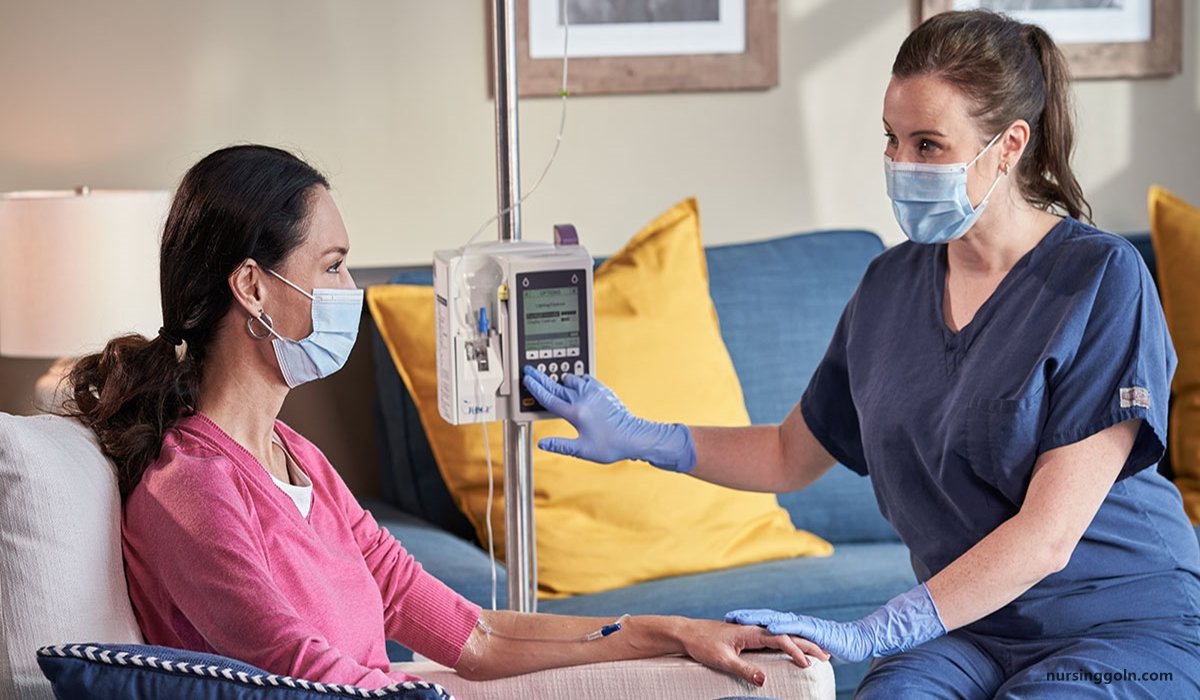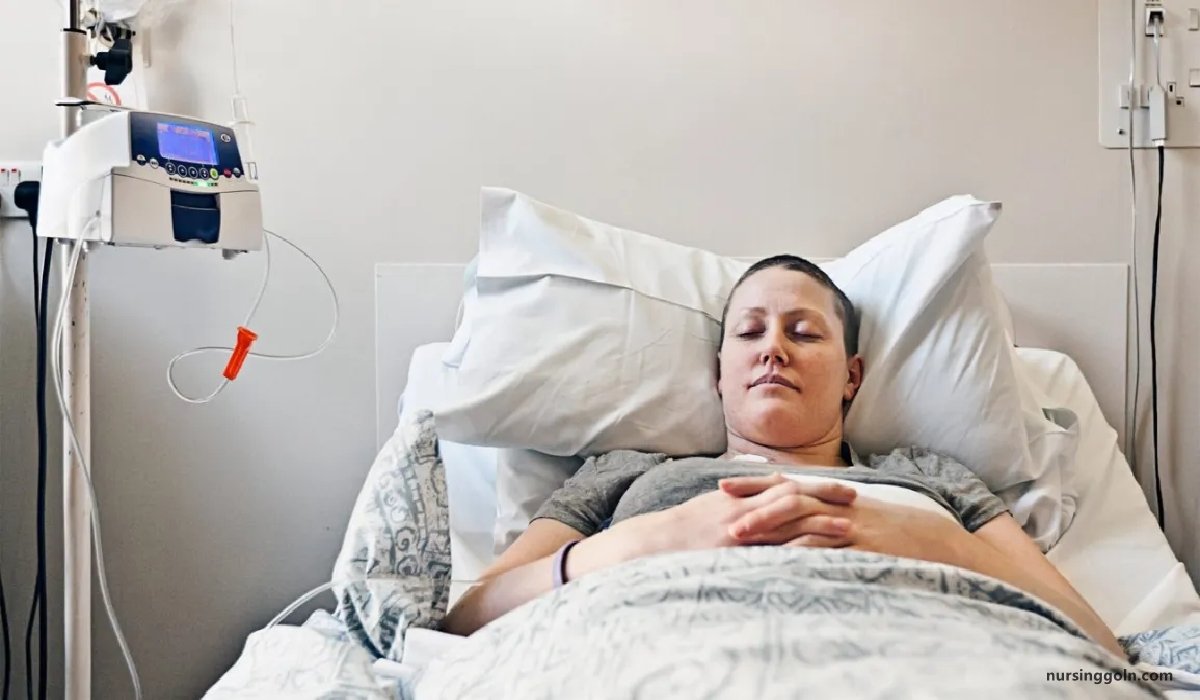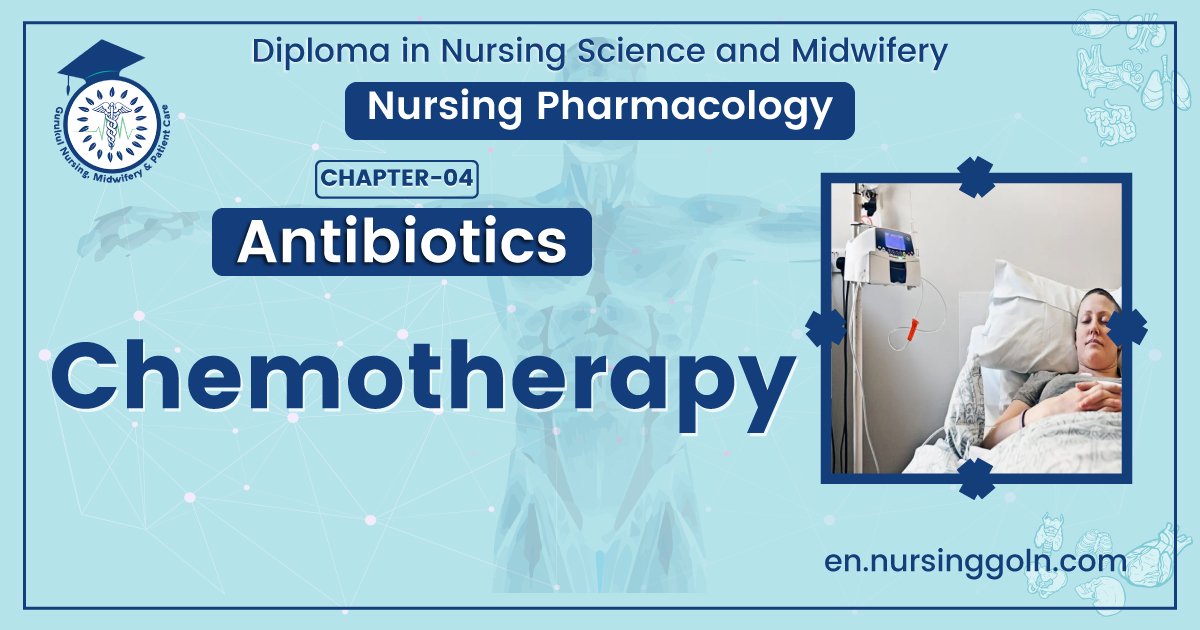Concept of Chemotherapy – This book covers the entire syllabus of “Pharmacology” prescribed by BNMC- for a diploma in nursing science & midwifery students. We tried to accommodate the latest information and topics. This book is an examination set up according to the teachers’ lectures and examination questions.
At the end of the book, previous questions are given. We hope in touch with the book students’ knowledge will be upgraded and flourish. The unique way of presentation may make your reading of the book a pleasurable experience.

Concept of Chemotherapy
Chemotherapy (often abbreviated to chemo and sometimes CTX or CTx) is a category of cancer treatment that uses one or more anti-cancer drugs (chemotherapeutic agents) as part of a standardized chemotherapy regimen.
Or,
Chemotherapy is the subdivision of pharmacology that deals with drugs that can destroy invading organism without destroying the host.
Antineoplastic Agents:
- Chemotherapeutic agents are also classified by chemical group, each with a different mechanism of action.
- Alkylating agents: Alters DNA structure by misreading DNA code, initiating breaks in the DNA molecule, cross-linking DNA strands
- Nitrosoureas: Similar to the alkylating agents, but they can cross the blood-brainbarrier.
- Topoisomerase I inhibitors: Induce breaks in the DNA strand by binding to enzyme topoisomerase I, preventing cells from dividing.
- Antimetabolites. Antimetabolites interfere with the biosynthesis of metabolites or nucleic acids necessary for RNA and DNA synthesis.
- Antitumor antibiotics: Interfere with DNA synthesis by binding DNA and prevent RNA synthesis.
- Mitotic spindle poisons: Arrest metaphase by inhibiting mitotic tubular formation and inhibiting DNA and protein synthesis.
- Hormonal agents: Hormonal agents bind to hormone receptor sites that alter cellular growth; blocks binding of estrogens to receptor sites; inhibit RNA synthesis; suppress aromatase of P450 system, which decreases level.
Types Chemotherapy:
1. Primary Chemotherapy: Initial cancer treatment with curative intent; used for Hodgkin’s disease, lymphoma, leukemia’s, testicular cancer.
2. Adjuvant Chemotherapy: Treatment of residual cells after surgical removal or tumor reduction (e.g. after mastectomy for breast cancer). Neoadjuvant chemotherapy shrinks large tumor for surgical removal. Both curative if tumor is removed.
3. Palliative Chemotherapy: For incurable cancer: prolongs and improves quality of life; reduces tumor size, symptoms
Side-Effects of Chemotherapy:
1. Generalized effects-
- Nausea
- Vomiting,
- Pain
- Sore mouth & throat,
- Anorexia,
- Change in taste and smell
2. Acute effects- occur within 30 minutes after treatment- pain at insertion site, cold feeling along the vein selected, and hypersensitivity
3. Long term effects- occur after 7 days. Affect major body organs- bone marrow, liver, kidney etc
4. Chemotherapy drugs are carcinogenic and teratogenic. Precautions should be taken to avoid any extravasation

Differentiate between antibiotic & chemotherapeutics:
| Antibiotic | chemotherapeutics |
| 1. Natural. | 1. Synthetic. |
| 2. All antibiotics are chemotherapeutics. | 2. All Chemotherapeutics are not antibiotics. |
| 3. Antibiotic active against microorganisms without virus & cancer cells. | 3. Chemotherapeutics active against all microorganism and cancer cell. |
[Ref-A short text book of nursing and mats/Dr. Tanvir]
selective toxicity of different antimicrobials against microorganisms.
Selective toxicity of antimicrobials against microorganisms: It means antimicrobials are safe for human; but harmful for microorganisms.
A. Selective toxicity: Chemotherapeutic drugs should be toxic to invading organisms and innocuous to the host. Such selective toxicity depends on the discovery of biochemical differences between the pathogen and the host that can be appropriately exploited.
B. Cause of selective toxicity: Host cells & microbial cells are different in structure. Antimicrobial therapy takes advantage of this dissimilarity of biochemical differences that exist between microorganisms and human beings. They have the ability to injure or kill an invading microorganism without harming the cells of the host. In most instances, the selective toxicity is relative rather than absolute, requiring that the concentration of the drug be carefully controlled to attack the microorganism while still being tolerated by the host.
C. Exception of selective toxicity: Cancer cells are clearly more similar to normal F cells than are any of the pathogenic invaders and this makes the problem of implemen selective toxicity especially difficult. So anticancer drugs do much more harm than other anti-microbials; sometimes they cause serious life threatening adverse effects.
[Ref- Rang-Dale/6h/648]
Multidrug Resistance:
Many pathogenic bacteria have developed resistance to the commonly used antibiotics. Examples include the following:
➤ Some strains of staphylococci and enterococci that are resistant to virtually all current antibiotics, the resistance being transferred by transposons and/or plasmids; such organisms can cause serious and virtually untreatable nosocomial infections.
➤ Some strains of Mycobacterium tuberculosis that have become resistant to most antituberculosis agents.
Prevention of drug resistance
It is of utmost clinical importance to curb development of drug resistance. Measures are:
1. No indiscriminate and inadequate or unduly prolonged use of AMAs should be made. This would minimize the selection pressure and resistant strains will get less chance to preferentially propagate. For acute localized infections in otherwise
2. Healthy patients, symptom-determined shorter courses of AMAs are advocated.
3. Prefer rapidly acting and selective (narrowspectrum) AMAs whenever possible; broad-spectrum drugs should be used only when a specific one cannot be determined or is not suitable.
4. Use combination of AMAs whenever prolonged therapy is undertaken, e.g. tuberculosis, SABE, HIV-AIDS.
5. Infection by organisms notorious for developing resistance, e.g. Staph, aureus, E. coli, M. tuberculosis, Proteus, etc. must be treated intensively.
Antimicrobial Chemoprophylaxis:
This refers to the use of AMAs for preventing the setting in of an infection or suppressing contacted infection before it becomes clinically manifest. The latter is also called ‘preemptive therapy’, which capitalizes on the small population of pathogen in the body before the disease is manifest.
Principles of anti-microbial chemoprophylaxis
1. Chemoprophylaxis should be directed against a specific pathogen or defined group of pathogens or used to prevent infection at a specific site.
2. The shorter the duration of prophylaxis, the broader the range of infections that may be prevented.
3. Prophylaxis is more effective and may be more widely used against pathogens that are poorly able to develop resistance to the drug used.
4. Prophylactic administration of antimicrobials generally requires doses equal to those used for therapy.
5. Antimicrobial prophylaxis should be used only in situations where its efficacy has been documented.

Rational Use of Antibiotics:
1. Use appropriate antibiotics with adequate bacteriological information.
2. Antibiotics should be used in proper dose and for appropriate duration.
3. CI Combination of antibiotic should be used where single drug is ineffective or to overcome the chance of microbial resistance to antibiotics.
4. A bactericidal antibiotic should not be used with a bacteriostatic antibiotic at the same time (antibiotic antagonism)
5. Broad spectrum antibiotics should not be used indiscriminately.
6. Therapy for undiagnosed microorganisms should be started with broad spectrum antibiotics and with combination of antibiotic (against gram +ve and gram -ve microbes).
7. Consider the patient’s condition during selection of antibiotics (e.g. in renal failure ciprofloxacin is contraindicated).
8. Should not use the newer member of group of antibiotics so long as the currently used drugs are effective.
Selection of Antimicrobial Agents:
Selection of the most appropriate antimicrobial agent requires knowing
➤ The organism’s identity,
➤ The organism’s susceptibility to a particular agent,
➤ The site of the infection,
➤ Patient factors,
➤ The safety of the agent, and
➤ The cost of therapy.

B-Lactam Antibiotics
These are antibiotics having a ẞ-lactam ring.
B-lactam antibiotics are:
➤ Penicillins
➤ Cephalosporins and cephamycins
➤ Carbapenems
➤ Monobactams
Properties of B-lactam antibiotics:
➤ All contain beta-lactam ring.
➤ All act on bacterial cell wall.
➤ All are bactericidal in action.
Read more:
